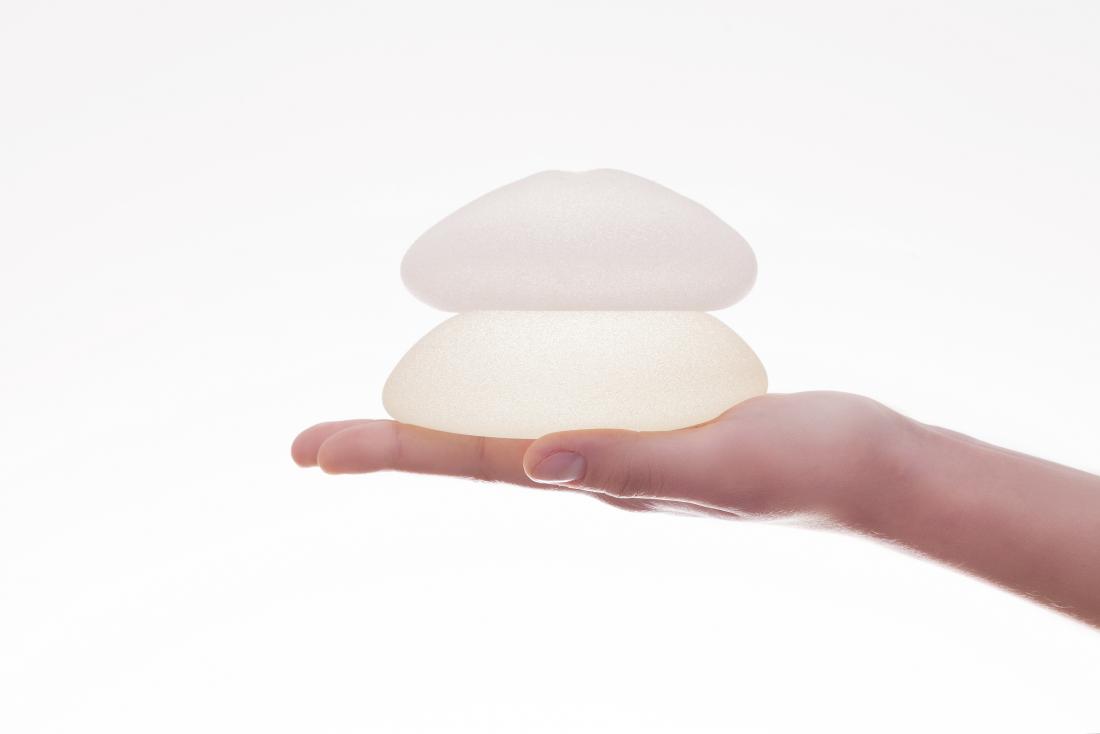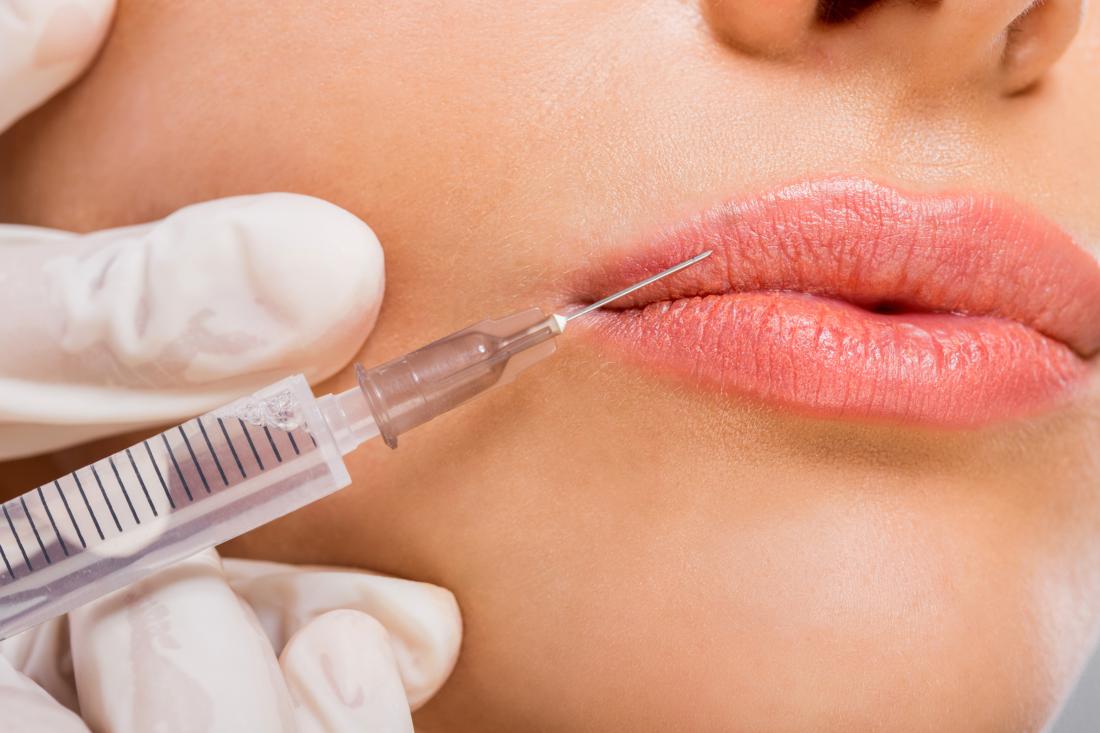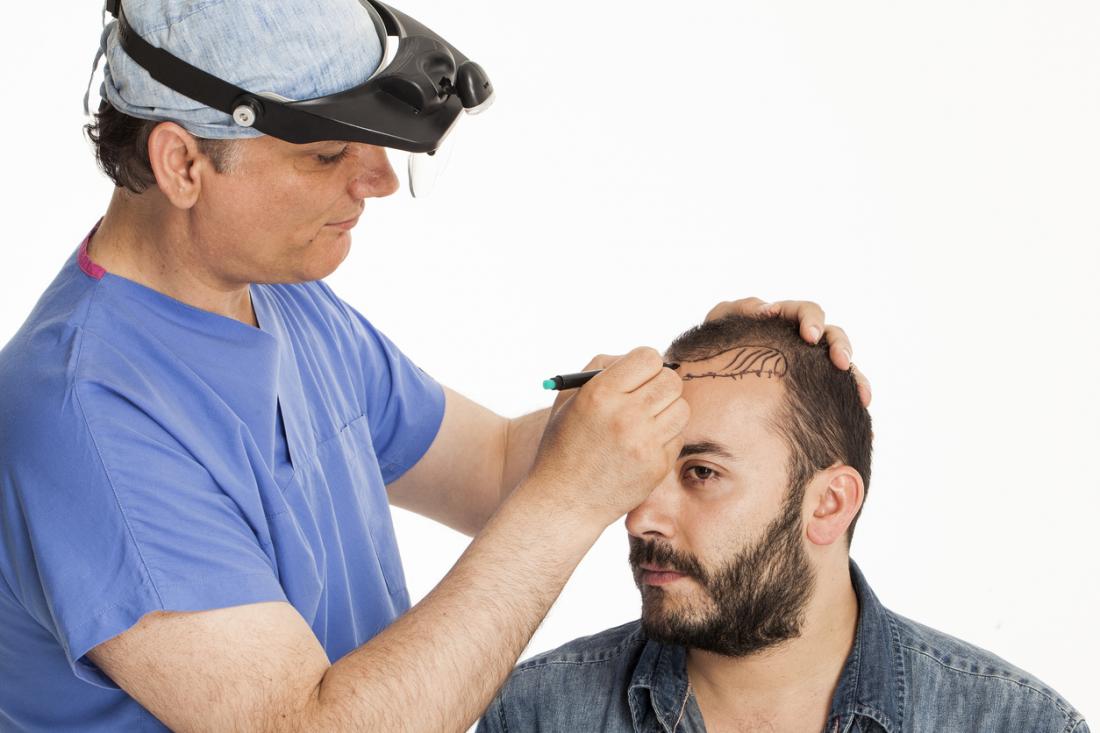Cosmetic surgery continues to grow in popularity, with 15.1 million cosmetic procedures carried out in the United States in 2013, an increase of 3 percent on the previous year.
Procedures are available for almost any part of the body, but the choice to undergo cosmetic surgery should not be taken lightly. The results are often permanent, so it is important to be sure about the decision, to use an appropriate practitioner, and to have the right motivation.
A surgeon may refer a patient for counseling before surgery if they believe there is an underlying problem that cannot be solved by the surgery, or if the patient shows signs of Body Dysmorphic Disorder (BDD).
BDD can cause a person to perceive that there is something seriously wrong with their appearance, when objective evidence suggests otherwise.
Reconstructive surgery is another type of plastic surgery. It aims to improve function and to give a normal appearance to a part of the person’s body that has been damaged, for example, after a mastectomy. This article will focus on cosmetic surgery only.
Types and uses
A variety of aesthetic procedures is available for different parts of the body.
Breast surgery

Breast implants can be used to increase breast size or in reconstruction after surgery.
Women may seek breast surgery to improve their body shape. Mammoplasty procedures may include:
Breast augmentation, or enlargement, traditionally performed using saline or silicone gel prosthetics, and now occasionally with fat grafting.
It may be carried out if the woman feels her breasts are too small, if one breast is larger than the other, or if the breasts have changed after pregnancy or breastfeeding. Some older women opt for this treatment when the breasts being to droop due to the skin losing elasticity.
In some women, a breast enlargement can boost self-esteem and improve their feelings about their sexuality. In some, however, existing problems remain. This is why women are encouraged to undergo counseling first.
Breast reduction can help provide relief from physical discomfort, while the aim of augmentation more often relates to appearance. Breast reduction may also reduce the risk of breast cancer in women who are at high risk of the disease.
Mastopexy, or a breast lift, involves removing skin and glandular tissue to make the breasts smaller and rearranging the remaining tissue to make the breast appear lifted.
Depending on how much volume a patient has lost or desires, mastopexy can be combined with an implant. While it is similar to a breast reduction, which removes a much greater amount of tissue, mastopexy is not usually covered by major insurance carriers as it is not deemed medically necessary.
Male breast reduction treats gynecomastia, an enlargement of the mammary tissue in men. It may be done by liposuction or with various scar patterns, often hidden around the nipple and areola.
Liposuction
Liposuction, or suction-assisted lipectomy, uses thin cannulas, or hollow metal tubes, to vacuum fat from various parts of the body, usually the abdomen, thighs, buttocks, hips, backs of the arms, and neck. Liposuction may also be used for male breast reduction.
Tools used in liposuction include standard, ultrasound, mechanical, and laser devices. They all tend to involve suction of fat through a tube.
To prevent complications, there is a limit to the amount of fat that the surgeon can safely remove, depending on whether the patient will be discharged immediately after surgery or admitted to the hospital.
Liposuction should not be intended as a weight-loss procedure. When performed in the right patient, the goal is to improve contour and decrease limited areas of fat deposits.
Complications are rare but possible. They include the accumulation of blood under the skin, known as hematoma, infection, changes in sensation, allergic reactions, damage to underyling structures, and unsatisfactory results. The doctor must discuss these with the patient beforehand.
Liposuction does not reduce the risk of developing diabetes, heart disease, or high blood pressure.
Vulvovaginal surgery
Labiaplasty, labioplasty, labia minor reduction, or labial reduction involves surgery of the labia majora or labia minora of the vulva, a part of the female genitalia. It aims to reduce elongated labia, usually as part of a vaginoplasty.
There is a lack of clinical or scientific evidence to guide gynecological surgeons as to the safety and effectiveness of cosmetic vaginal procedures.
Body procedures
Abdominoplasty, or “tummy tuck” reshapes and firms the abdomen. Excess skin and fat is removed from the middle and lower abdomen, with the aim of tightening the muscle and fascia of the abdominal wall.
This may be suitable after pregnancy or after losing a great deal of weight.
Other body contouring procedures
Buttock augmentation enhances the appearance of the buttocks by making them larger. The surgeon will either graft fat from another part of the patient’s body using liposuction. This is known as the “Brazilian Butt lift.” Silicone implants may also occasionally be used in the buttocks.
A buttock lift, or lower body lift involves removing excess skin from the hips, buttocks, and thighs in order to tighten and lift them. These procedures are often combined with abdominoplasty in patients who have lost a considerable amount of weight after bariatric, or weight loss, surgery, for example.
Facial cosmetic surgery
Blepharoplasty, or eyelid surgery, aims to reshape the eyelids. With age, the skin becomes lax, and there may be drooping or hooding of the upper lids, and bags on the lower lids. Eyelid surgery may be functional, cosmetic, or both. It usually involves removing or repositioning excess skin and fat, and the procedure may reinforce surrounding muscles and tendons.
Surgery can change the shape of the face or tighten the skin.
In rhinoplasty, also known as a “nose job,” the surgeon reshapes the patient’s nose to improve the appearance and often breathing, too. It may involve reshaping the tip and reducing the bony hump at the upper aspect of the nose.
It can be performed with small incisions that are well hidden, often inside the nostrils. Surgeons do not recommend rhinoplasty until the patient is at least 15 years old, to allow for full growth of the cartilage and bone of the nose.
Otoplasty, or ear surgery, treats prominent or misshapen ears by surgically “pinning” the ear closer to the head with sutures, reshaping the cartilage, or both.
One or both ears may be treated. It is most commonly performed in children after of 5 or 6 years as the ears have essentially reached adult size by that age.
Rhytidectomy, also known as a facelift, aims to surgically remove wrinkles and tighten facial skin in order to achieve a more youthful appearance.
Typically, the incision is placed in front of and behind the ears, extending into the hairline in the temple area. The skin is lifted off the deeper facial tissue, redraped more tightly, and the excess skin is removed. The incisions are then closed with sutures.
The deeper tissues of the face and neck may also be tightened. Blepharoplasty, or eyelid surgery may be done at the same time.
A brow lift, browplasty, or forehead lift aims to remove signs of aging by raising drooping eyebrows and removing forehead wrinkles, or worry lines. It is often done alongside other cosmetic procedures to achieve a more harmonious facial appearance.
Chin augmentation aims to make the chin more prominent and provide a better balance of facial features. It may be done at the same time as rhinoplasty, depending on the measurements taken before surgery. It can be performed with either a prosthetic implant or through manipulation of the chin bone.
Malar, or cheek, augmentation can make the cheekbones more prominent. The surgeon may place an implant at the top of the cheekbones.
Peels, fillers, grafts, and laser treatment
Less invasive treatments may include peels, fillers, injections, grafting, and laser treatment.

Fillers can be used to iron out wrinkles and to make the lips look plumper.
Chemical peels may help treat acne, pock marks, scars, or wrinkles. A number of active agents may be used.
A light or superficial peel uses Alpha Hydroxy Acids (AHAs) such as glycolic, lactic, or fruit acids to treat the outermost layers of the skin. The treatment is not as deep as with some peels, so the recovery time is minimal.
A medium peel usually involves TCA (tri-chloroacetic acid) of various concentrations. It penetrates the dermis, or deep layer of the skin, to a greater depth than the light peels. The recovery and pain are more significant than the lighter peels. Redness and flaking may persist for several days or weeks.
A deep peel, or phenol peel, penetrates the skin to the deepest extent. As a result, it has the greatest impact on resurfacing the skin, but it also has the longest recovery time, and it can causing scarring and skin lightening.
Chemical peels have been shown to be safe and effective for both light and darker skin types.
Botulinum toxin, or botox, is the brand name of a toxin produced by the bacterium Clostridium botulinum (C. botulinum), first approved by the FDA in the 1980s for muscle spasm.
A range of cosmetic surgery procedures aim to improve appearance.
It is used to treat wrinkles and facial creases.
It acts by blocking the signal from nerves to the muscles that are injected. The injected muscle can no longer contract, or tighten, as forcefully as before, and this leads to a controlled relaxation of the muscles.
It is approved for treatment of frown lines on the forehead, crow’s feet, or lines around the eye, and axillary hyperhidrosis, or increased sweating of the armpits.
Apart from “botox,” several other brand names of botulinum toxin are now commercially available.
Soft tissue fillers, or dermal fillers, are medical device implants approved by the FDA for use in helping to create a smoother, fuller appearance in the face.
They can be used to treat nasolabial folds, cheeks, and lips, and to increase the volume of the back of the hand.
They can also reduce wrinkles, lines and scars, and augment soft tissue contours. They are not permanent, but they are degraded by the body, so repeat treatments may be necessary to maintain the effect.
Commercially available products include hyaluronic acid, poly-L-lactic acid (PLLA), calciumhydroxyapetite, and polymethylmethacrylate beads (PMMA).
These products normally come in a gel formulation that fine needles can inject into the deeper layers of the skin and underlying soft tissue of the face. Collagen injections are no longer performed because some patients experienced allergic reactions, some of them serious.
Complications can occur with facial fillers, and especially permanent fillers. Clinicians and patients are urged to check the contents of a filler and discuss all the implications of surgery before going ahead with a procedure.
In 2015, the U.S. Food and Drug Administration (FDA) warned that rare but serious problems may arise if soft tissue fillers are accidentally injected into blood vessels in the face.
Fat injections and fat grafting have broad applications in cosmetic surgery.
The patient’s own fat is collected from one part of the body using liposuction, and it is injected into areas requiring volume enhancement. It is usually applied to the face, including the lips, the hands, and depressions in skin contour.
The results are generally safe and long lasting, and it can have the additional benefit of removing fat from a place where it is not wanted. The fat is removed, washed, and purified and then carefully re-injected with specially designed needles. Sometimes the procedure needs to be repeated several times for best results.
Stem-cell enriched fat grafts have been trialed for reconstructive surgery, with promising results, suggesting that the procedure is reliable, safe, and effective. However, tumor growth may be an adverse effect, so further research is needed before stem cells can become central to plastic and reconstructive surgery.
Lasers and light-based facial treatment, also known as facial laser resurfacing or laser skin treatment, can help reduce fine lines, wrinkles, and abnormal pigmentation, such as sunspots. Treatment utilizes concentrated, pulsating beams of light.
A variety of laser types are used, and these vary in aggressiveness and downtime. It may take several sessions to see results.
Hair transplantation
Surgery can return hair growth to those with hair loss.

155757
Hair transplantation is a kind of cosmetic surgery. can help renew hair growth.
Tiny hair follicle grafts are obtained from the back of the scalp, where hair tends to be denser. It is then transplanted with minute incisions to the areas of the scalp that are affected by hair loss.
Patients may need several sessions to achieve the desired results. After 6 weeks, the transplanted hair will fall out, but about 3 months later, new hair will appear.
Anyone who is considering cosmetic surgery should stop smoking or using any tobacco products several months prior to any procedures, as they can interfere with wound healing.
Choosing a surgeon
It is important to choose a surgeon who is qualified and accredited by a professional board, such as the American Board of Plastic Surgery.
Medical spas offer various services, but there is a lack of regulation regarding their practice. No organization sets standards for medical spas, and there is no recognized definition of what constitutes a medical spa.
Cosmetic surgery and mental health issues
Research suggests that people who undergo cosmetic surgery are also more likely to experience psychological issues, such as depression and body dysmorphic disorder (BDD).
One study found that women who had breast augmentation also had a higher risk of suicide. Doctors are asked to be aware of this possibility when assessing patients for surgery.
Tips
People who are considering cosmetic surgery need to weigh up the options carefully before going ahead.
Here are some tips:
- Choose a reputable surgeon and checking their credentials.
- After obtaining the surgeon’s opinion, make your own decisions, and resist being persuaded to opt for something you did not previously want.
- Get full information about the procedure and weigh up all the pros and cons beforehand.
- Be aware of any risks and limitations, for example, will this need redoing in 6 months?
- Choose the right moment, avoiding, for example, the time around a stressful event, such as changing jobs, bereavement, having a baby, or moving house.
- Never seek cosmetic surgery to please or impress anyone else.
- Do not travel too far for treatment, or if travel is necessary, ensure the arrangements are reliable, especially if opting for surgery abroad.
- Beware of non-refundable deposits, and be prepared to change your mind.
Complications
Any surgery has a risk of complications.
The American Society of Plastic Surgeons urges people to seek medical attention at once if they notice any of the following symptoms during or shortly after surgery:
- unusual pain
- visual disturbances
- white skin near an injection site
- signs of stroke
Any decision to go ahead with cosmetic surgery should first be discussed with a primary health care provider, such as a family doctor.